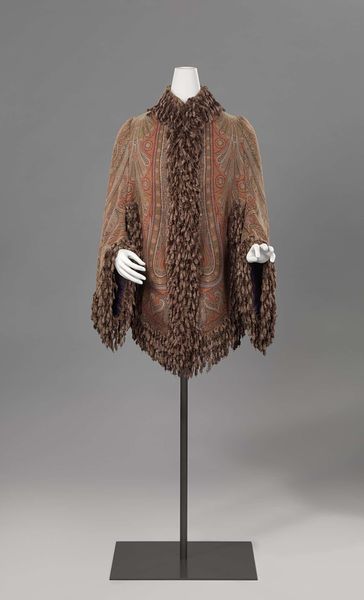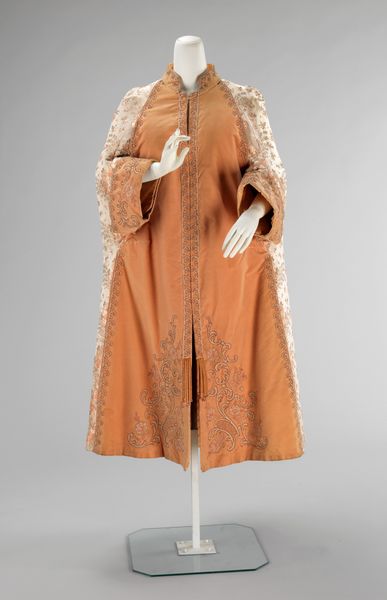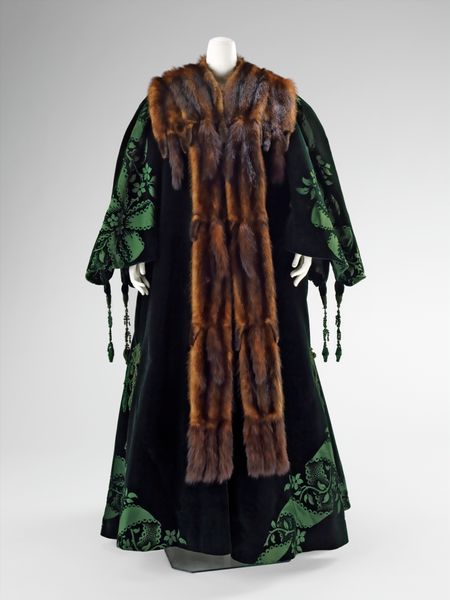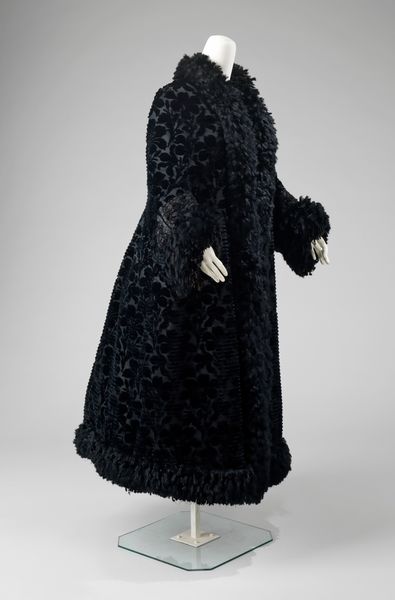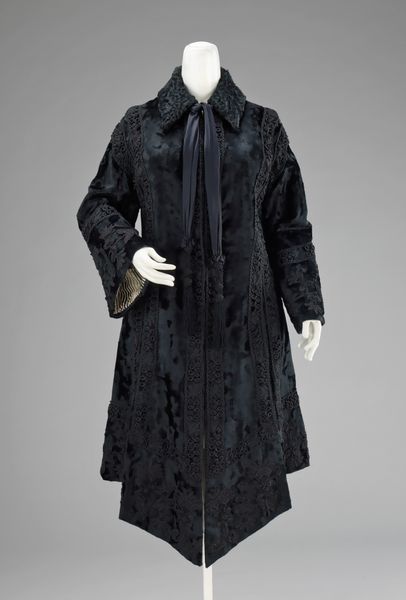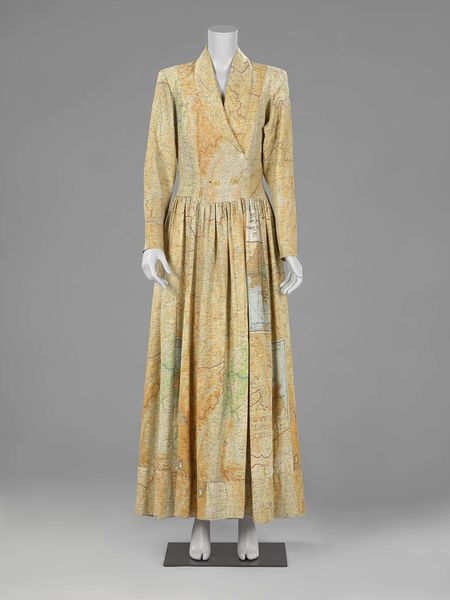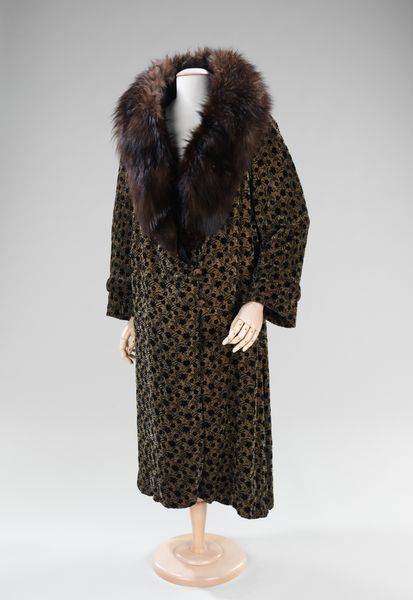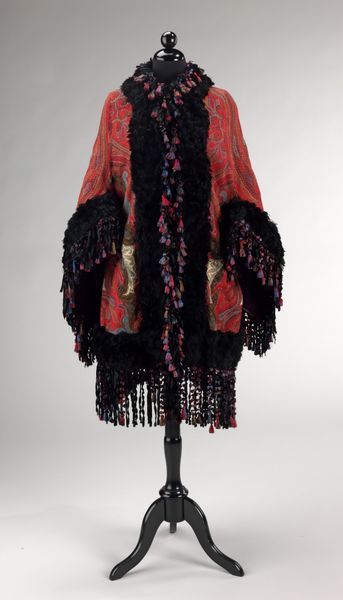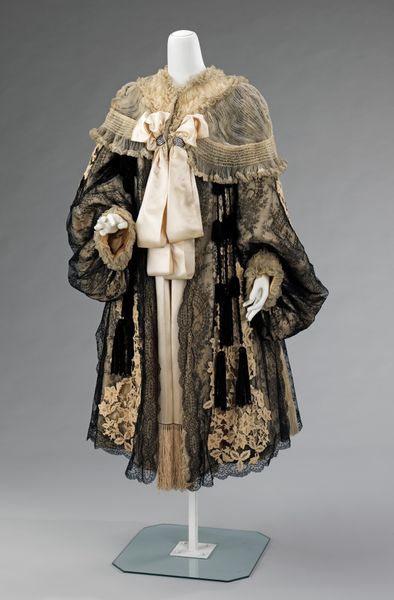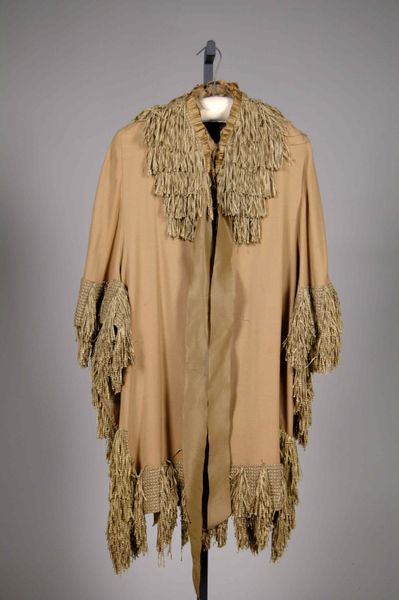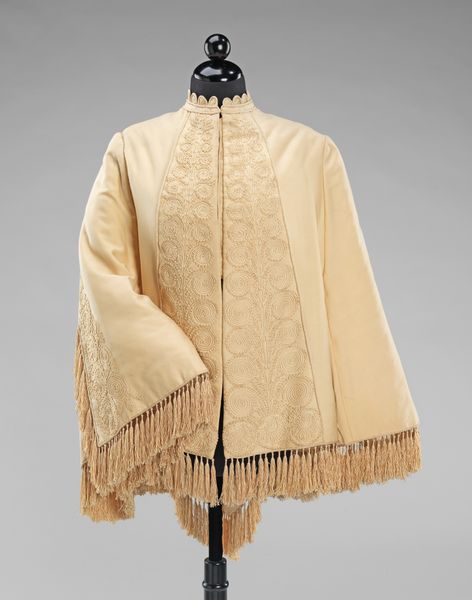
fibre-art, textile
#
fibre-art
#
textile
#
decorative-art
Dimensions: length 58 cm, length 114 cm
Copyright: Rijks Museum: Open Domain
Curator: Let's examine this remarkable dolman coat, created circa 1880-1885, and consider the intricate detail achieved through its mixed media textile construction. Editor: The first thing that strikes me is the unexpected contrast – that plush fur trim against the muted rose of the floral pattern creates such a decadent feel. Curator: Precisely, the textile pattern draws on an exploration of line and repeated forms—a design intending to construct visual rhythm through a sophisticated application of decorative art principles. Editor: And considering the craftsmanship involved, imagine the labor required to meticulously apply that fur trim. What does this tell us about the consumer, and the social context surrounding such a piece? Who was able to access such an item, considering both its production and materials? Curator: Excellent point, these complex fabrics indicate this dolman coat must have been designed for an upper-class client— the decorative program speaks to this status with no subtlety. It seems clear how this object intended to present its wearer. Editor: But it also hints at the conditions of the garment workers, potentially exploited, whose skills enabled its creation. Do we know where this coat might have been produced? I’m curious to know more about the production line or studio behind its design. Curator: Though exact provenance is not recorded in the item's metadata, it's likely this garment came out of an atelier in a major fashion center like Paris or London. I agree that the unseen hands shape our understanding—but my perspective seeks insight into its pure artifice, through an exploration of semiotics. Editor: But focusing on the material culture gives us tangible links to the era. It is critical to appreciate the materiality itself: each fiber sourced, spun, woven, dyed; each piece painstakingly sewn together...it adds profound layers to our interpretation of artistic value beyond pure aesthetics. Curator: And yet, within this elaborate construction lies its enduring ability to invite contemplation about form and surface through ornamental elements—revealing fundamental components to fashioning historical narrative, no? Editor: Perhaps. Considering how labor intensive its manufacturing must have been certainly complicates any easy equation between the wearer and maker... Curator: Indeed. A complex interplay, one interwoven as precisely as its rich ornamentation! Editor: I completely agree; by delving into materials and production methods, as much as the artful arrangements, we get closer to deciphering broader social textures too.
Comments
rijksmuseum about 2 years ago
⋮
This quilted dolman coat is trimmed with pared ostrich feathers. It was a common decorative feature in the 1880s, used especially by French fashion designer Emile Pingat. The sleeves are gathered at the shoulder to accommodate the puffed sleeves of the dress.
Join the conversation
Join millions of artists and users on Artera today and experience the ultimate creative platform.
